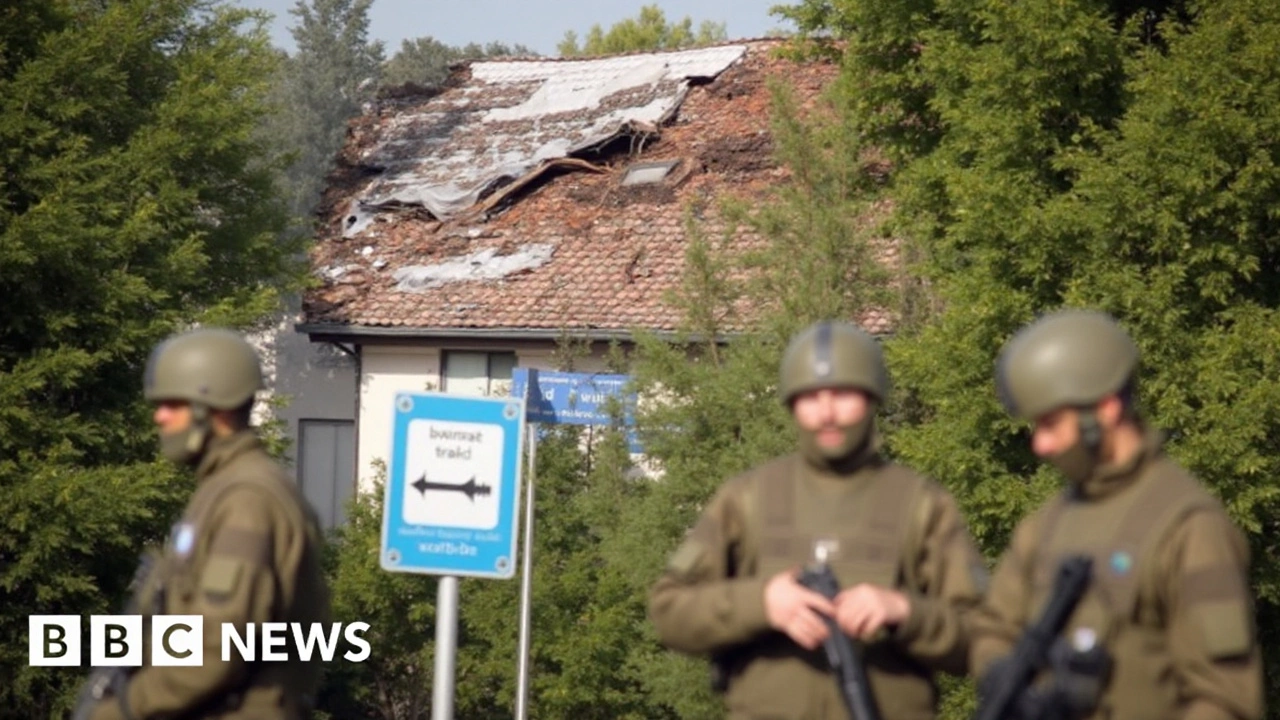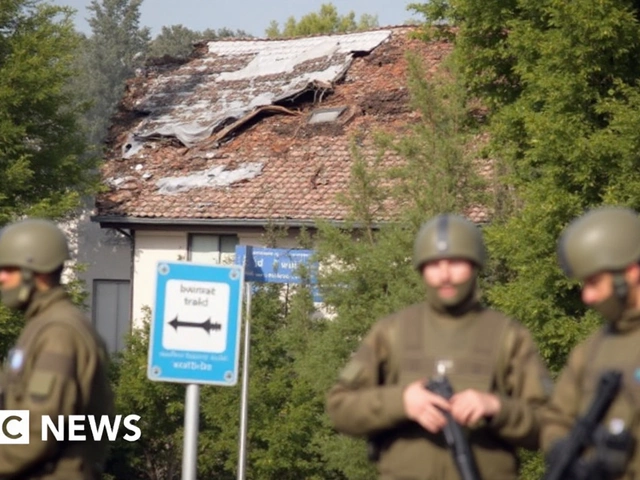Shortly before midnight on September 9, 2025, Polish air defenders and NATO jets scrambled as a swarm of Russian kamikaze drones slipped into Polish airspace—19 at the very least, possibly as many as 23. It was deliberate, according to Warsaw and allied analysts. For hours, air traffic halted at four airports, including Warsaw Chopin and Rzeszów–Jasionka, while fighters and ground-based units went hunting. At least eight drones were shot down, most of them by Dutch Air Force units operating under NATO command.
Prime Minister Donald Tusk said the drones posed a direct threat and stressed that those deemed most dangerous were neutralized. Poland immediately requested NATO Article 4 consultations, the alliance tool that triggers urgent talks when a member feels its security is at risk. Deputy Prime Minister Radosław Sikorski put it bluntly on social media: this was not simply a border incident, but an attack on NATO and the EU.
What happened, and why it matters
Polish officials describe an organized incursion, not a stray overflight. Technical analysis after the intercepts identified at least some drones as the Gerbera type—a loitering munition class designed to cruise, find targets, and dive in. Defense experts Justin Bronk (RUSI) and Justin Crump (Sibylline) told BBC Verify the scale alone made an accident implausible. Their take: Moscow knew what it was doing.
The immediate consequences were visible across the country. Civil aviation paused over four major hubs—Warsaw Chopin, Warsaw Modlin, Rzeszów–Jasionka, and Lublin—until the swarm cleared Polish skies. NATO’s quick-reaction aircraft launched, Polish units engaged, and Dutch forces executed most of the reported shootdowns. Debris teams began canvassing impact areas before sunrise.
That last part matters. Recovery crews will catalog fragments to lock down the drones’ exact configuration and route, piecing together radar tracks, electronic warfare logs, and eyewitness reports. This forensic work is what turns a tense night into an evidence-backed case for allies weighing their next steps.
Polish media also zeroed in on a glaring vulnerability. Rzeczpospolita reported that the modernization of Poland’s SkyCTRL anti-drone system had been delayed for a year and a half due to funding shortfalls. The system was effectively inactive the night of the attack. Officials now expect money to flow, but even with green lights, it takes months to buy, integrate, and train on new counter-drone gear.
The broader context is hard to ignore. Europe has seen spillovers from the war in Ukraine before—stray missiles, drone fragments, and temporary airspace closures along NATO’s eastern flank. But a multi-drone incursion deep into a member’s territory is a sharper test of the alliance’s air defense posture and political resolve. It raises uncomfortable questions about how quickly NATO can scale counter-drone coverage when swarms and saturation attacks become the norm.

What Article 4 could trigger
Here’s the key distinction. Article 4 doesn’t promise a military response. It brings allies to the table for urgent consultations, intelligence sharing, and decisions on next steps by consensus. The point is fast coordination when a member believes its territory or security is threatened. Turkey has used it multiple times over spillover from Syria. Eastern allies turned to it after Russia’s seizure of Crimea to secure extra NATO presence on their soil.
So what might this round produce? In practical terms, expect tighter air policing timelines, reinforcements for ground-based air defense, and more electronic warfare coverage near likely approach corridors. Allies could rotate additional fighters and surveillance assets into Poland. NATO’s integrated air and missile defense network may shift to a higher alert status in the northeast. And Poland will push to harden critical infrastructure—from airports to logistics routes—against drone strikes.
Air defense planners will also chase lessons from the night itself. Loitering munitions are small, slow, and cheap, which makes them hard to spot and even harder to intercept when launched in numbers. They fly low to dodge radar and can be decoys for pricier missiles. The best answer is layered: radar tuned for low-altitude targets, passive sensors, jammers to scramble guidance, guns and missiles for the hits, and command-and-control software to fuse it all in seconds, not minutes.
Poland is building that kind of stack, but it’s a race. The country is midstream on major upgrades: long-range Wisła (Patriot) systems, short-range Narew batteries, integrated battle management, and point-defense like Pilica+. Each layer helps, yet counter-drone systems—especially the software and jammers—are the connective tissue that turns expensive batteries into an effective shield. That is why the SkyCTRL delay stings.
There’s also a civil aviation angle. Shutting down Warsaw’s airspace is not just a safety precaution; it’s an economic shock. Rzeszów–Jasionka has served as a logistics lifeline for aid flowing to Ukraine. Closing it, even temporarily, ripples through supply chains, military transit planning, and insurance premiums for carriers and cargo firms. Every such incident nudges airlines and shippers to reassess routes, contingencies, and risk exposure.
Legally and politically, Poland frames the drones as an attack on NATO and EU territory. That matters in Brussels and in allied capitals. An intentional strike inside the alliance tests the boundary between harassment and escalation. If allies agree it was deliberate, they will look for a response that deters follow-ons without sleepwalking into a wider conflict. That is where Article 4 diplomacy counts—calibrate the answer, keep it collective, and avoid handing Moscow an easy narrative about NATO overreaction.
What was the motive? We don’t know, and intent is always the hardest thing to prove. But patterns offer clues. Probing allied defenses, mapping radar coverage, and forcing expensive intercepts are all part of modern gray-zone tactics. Drones are tailor-made for this: they are cheap to send, costly to defeat, and politically awkward to respond to if they don’t cause mass casualties.
For Poland, the to-do list is long and immediate. Expect more joint drills, faster procurement lines for counter-UAS gear, and dense coverage around airports, bases, and energy sites. For NATO, the answer likely includes a mix of deployments, information sharing, and tighter rules on how and when to engage unmanned aircraft that cross borders. Allies have been moving in this direction since the early days of the Ukraine war, but swarms like this push the timeline forward.
- Reinforce air policing with additional fighters and airborne early warning near Poland’s air corridors.
- Deploy more short-range air defense and mobile jamming units to likely drone approach routes.
- Integrate civil and military sensors to shrink detection gaps at very low altitude.
- Harden airports and logistics hubs with rapid-deploy counter-drone kits and trained response teams.
- Run red-team drills to stress-test command-and-control under swarm conditions.
Inside Poland, the budget debate will heat up. Counter-drone funding isn’t flashy, but it’s now a frontline issue. The country has poured money into big-ticket systems that deter missiles and aircraft. The missing link is often the modest hardware and software that swats down small unmanned threats before they force airport closures and televised scrambles. Expect Parliament to fast-track the SkyCTRL upgrades and ring-fence funds for training and sustainment, not just procurement.
Allies will also talk about red lines. What is the trigger for engaging drones that appear to be transiting with no declared target? Who makes the call at 2 a.m. when flight paths threaten a civilian corridor? How do you communicate with Moscow in real time to avoid misread signals, while also denying Russia the ability to normalize cross-border probes? These are practical questions, not hypotheticals, and they matter more than the performative rhetoric that often takes over on days like this.
For now, Poland has done what it can do on day one: intercept, secure, gather evidence, and bring the issue to the alliance table. The next phase moves from the night sky to the conference room. If history is a guide, Article 4 consultations will not be the final step, but they will set the tone—coherent, proportionate, and collective. That tone, more than any single weapons system, is what Moscow will study after the last debris bag is sealed.







